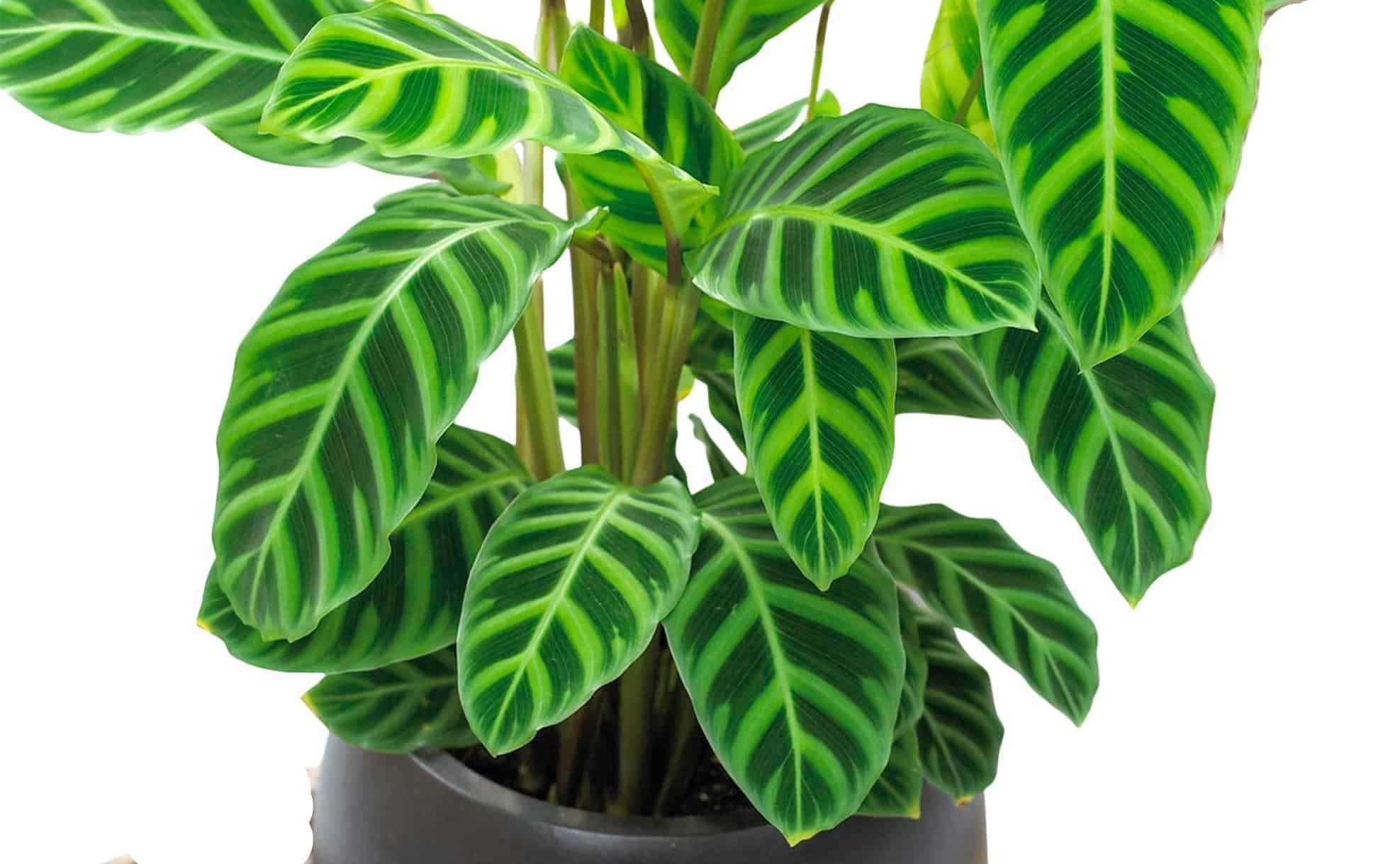
How to Grow the Top Varieties of Calathea Plants
Calatheas are renowned for their stunning green foliage adorned with stunning patterns and striking hues. The leaves of the Calathea plant represent stunning shades of green, making them the perfect choice for any room. Calathea plants are usually referred to as Prayer plants because of the leaves’ distinctive movement with day and night light variation.
Calathea can be a difficult houseplant choice for plant parents. People appear to either like them or dislike them. This is understandable since they can be somewhat demanding to maintain. However, once you’ve figured them out, they are fairly easy to care for.
7 Popular Varieties of Calathea Plants
Here are a few of my top Calathea varieties I’m sure you’ll enjoy as much as I do!
Calathea Orbifolia
Calathea Orbifolia or Round Leaf Calathea is a beautiful but difficult plant to maintain. It has large, round leaves with silvery stripes. It is so attractive, and those who love plants will not resist purchasing this beauty.
Silver-green leaves on this species develop in a fan shape and can grow quickly. Leaves are smooth with widths up to 12 inches. To ensure their health, the plants shall have ample space to grow, adequate moisture, and indirect sunlight. Calathea Orbifolia, when planted indoors, usually grows around 2 feet tall. However, there are occasions when it could grow higher.
Calathea Zebrina
Calathea Zebrina is a species also known as Calathea Zebra plant, which is part of the family of Marantaceae. The Calathea Zebra plant is an evergreen ornamental plant with unique dark velvety dark leaves with alternate stripes of lime green, creating a look like a Zebra.
Calathea Zebrina, in ideal conditions, usually grows to range about four feet tall with a tall stalk and oval-shaped leaves, typically two feet long and an elongated end. Calathea Zebra plants come with ordinary pink to white flowers that rarely appear in indoor environments.
It is possible to cultivate Calathea plants such as Calathea Zebrina indoors and outside. However, growing it outdoors is slightly more difficult. The growth of this plant will depend on the right watering schedule and the right conditions for the environment. In general, Zebra Plant seeks more attention than other Calatheas; however, its size and the attractive colors of its foliage are enough to warrant its cultivation.
Calathea Roseopicta
Calathea Roseopicta is also known in the form of Rose Painted Calathea. It has stunning oval-shaped leaves with a pattern which enchants every living space with its beauty. The Calathea plants are known for their adherence to their surroundings, and guess what? The Roseopicta plant is among the most sought-after plants.
However, even a small variation in the setting isn’t appropriate for the plants. Roseopicta has many attractive variants such as:
- Calathea Roseopicta Rosy
- Calathea Roseopicta Dottie
- Calathea Roseopicta Silvia
- Calathea Roseopicta Crimson
- Calathea Roseopicta Medallion
Calathea White Fusion
Calathea plants are renowned for their beautiful evergreen leaves. If you enjoy lush tropical plants and beautiful species from the Amazon rainforest, Calathea Fusion White is a must-have plant. As the name suggests, it has white color fused with green leaves, and the underside is a lighter purple, creating an incredible watercolor painting marble-like effect.
White Fusion Calathea is somewhat difficult to maintain and is more sensitive to sunlight than other plants. However, it will thrive inside your home with the proper maintenance and supervision. Please pay more attention to the White Calathea than other house plants since they require the highest humidity and indirect light.
Calathea Lancifolia
Calathea Lancifolia is commonly known as the Rattlesnake plant, and it is native to Brazil. It features distinctive deep green leaves that are shaped as spears. The plant is often referred to as the Rattlesnake plant because of the distinctive markings on the leaves. These marking look like rattle snakeskin patterns. The leaves are also adorned with stunning purple undersides, making them appear unique in any space.
Rattlesnake plants, if taken proper care of, can reach 30 inches tall. The unique leaves and stunning colors make it an eye-catching plant. If you’re searching for an attractive, captivating and relatively easy-to-care Calathea for your home, the Calathea Lancifolia is a good choice.
Calathea Rufibarba
Calathea Rufibarba plant is renowned due to its vivid green leaves with purple undersides. The long, slim leaves shift from light green to dark shades as they grow and change to maroon. Calathea Rufibarba is a great choice if you are searching for an exotic and beautiful houseplant.
The furry, fuzzy Calathea is among the rare plants of the Calathea family. The leaves and stems have undersides covered in hair-like, fine fuzz. It has earned various names such as “Furry Calathea” or “Furry Feather Calathea.” Various gardeners call it “Velvet Calathea” because of its fuzzy and soft leaves.
Calathea Warscewiczii
Jungle Velvet Calathea (Calathea Warscewiczii), is a tropical flowering plant known for its distinctive velvety leaves with two shades. The leaf’s top is light and dark green, creating the appearance of a fish-tailed design. The underside is either burgundy or maroon.
Calathea Jungle Velvet brings tropical greenery indoors, reaching 3-4 feet in perfect conditions, and blooms with cone-shaped cream flowers bloom in the summertime. The delicate flowers appear like long white flowers, with petals that overlap and twist, like the petals of a rose. Jungle Velvet Calathea is one Calathea variety that easily blooms indoors.
How to Take Care of Calathea Plants
Calathea plants are tropical plants that are native to Central and South America. Calathea plants flourish in a warm and humid atmosphere with moist soil throughout the year. They also thrive in areas that are shaded and have warm conditions. This article will give you some guidelines for keeping your Calathea in a healthy and happy environment.
Watering:
Water is a vital component of Calathea care. Calathea requires moist soil; however, it shouldn’t be too wet. Make sure to water your plant after the upper two inches of soil have become dry. Please check the soil moisture level prior to watering the plant. Additionally, during the growing season, the plant needs more water from spring to summer than in the winter. It is recommended to water it twice a week during summer and every week during winter.
Light specifications:
Originating from the Brazilian rainforest, Calathea favors flourishing in a shady area as it has proven to thrive naturally under the diffused light of tall trees. Calatheas are generally unable to tolerate direct intense sunlight. However, they can withstand the early morning sun’s rays.
These plants demand low to moderate indirect light. Therefore, place them just a few feet from the east or west-facing windows with blinds or curtains.
Humidity & Temperature:
Calathea likes a high-humid environment. The humidity minimum should be 50%, and a 60 to 70% level will make it ideal for its growth. If your indoor humidity levels are low, please set up a humidifier close to the Calathea plants, or mist frequently to boost the humidity.
The typical temperature at which Calatheas are happy is between 65°F and 85°F. Additionally, Calatheas cannot tolerate temperature variations. Hence, they should be placed in areas always free of cold drafts, such as air conditioners and windows.
Soil and Fertilizer Requirements for Calathea Plants
Soil Requirements:
Calathea plants thrive in soil that is moist. Therefore, pick soil with a high capacity for retaining moisture. But the soil should also be well-draining. Soil that is too wet is detrimental to the plant’s health and may trigger fungal infections.
When selecting a readymade soil, we suggest this African Violet soil mix available on the market since it is appropriate for Calatheas. Make use of perlite, peat moss, orchid bark, and normal potting soil for houseplants if you plan to create your soil mix.
Fertilizer requirements:
Calathea plants require additional nutrition every month during the growing seasons.
We suggest using a balanced 2-2-2 houseplant fertilizer in slow-release or liquid form during spring and summer. Dr Earth Exotic Blend Organic Fertilizer is a good choice.
Growing Calathea Plants: Conclusion
The real challenge is looking for the most appropriate variety of Calathea plants according to your interests and requirements. The Calathea genus has above 60 varieties with low to very high care demands.
Ideally, with the seven interesting Calatheas varieties mentioned above, you will be able to select the perfect Calathea variety for your indoor space.



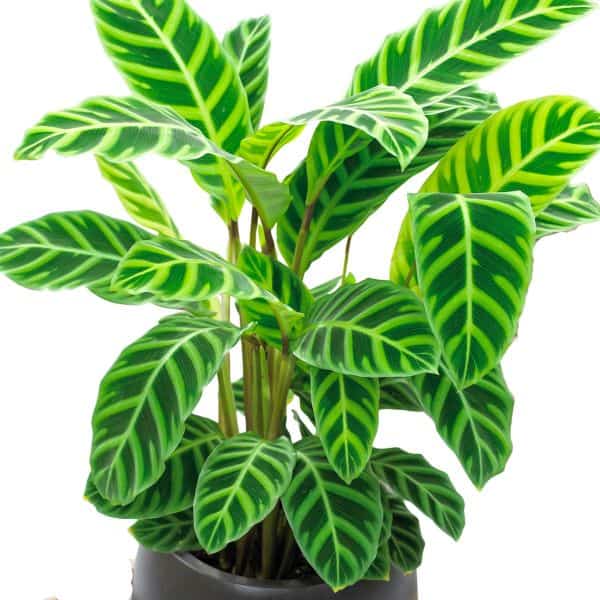
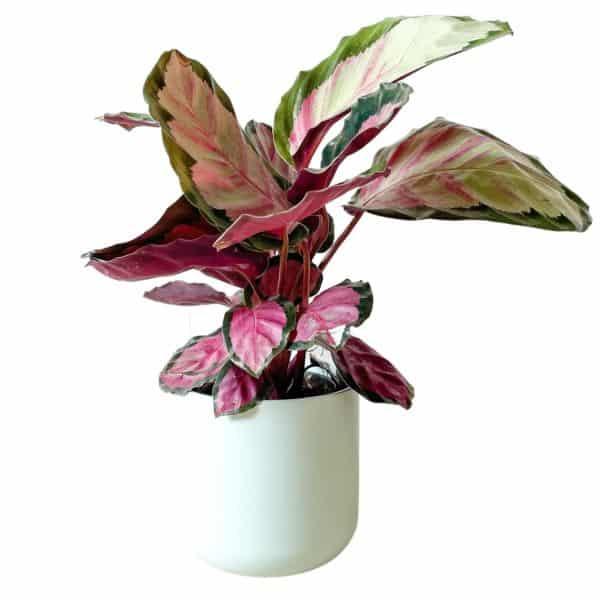
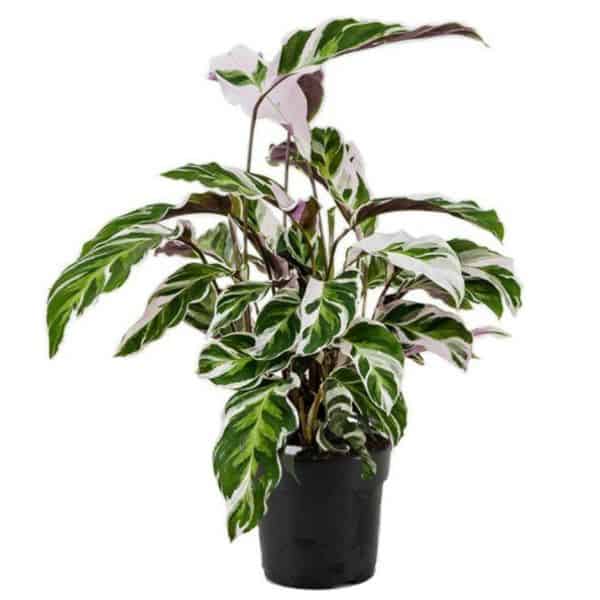
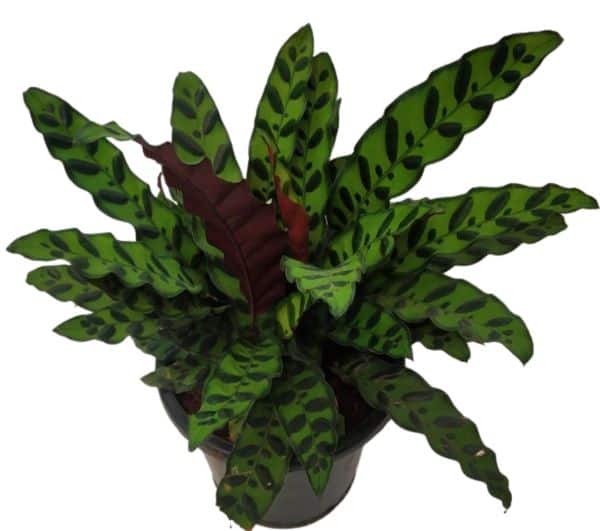
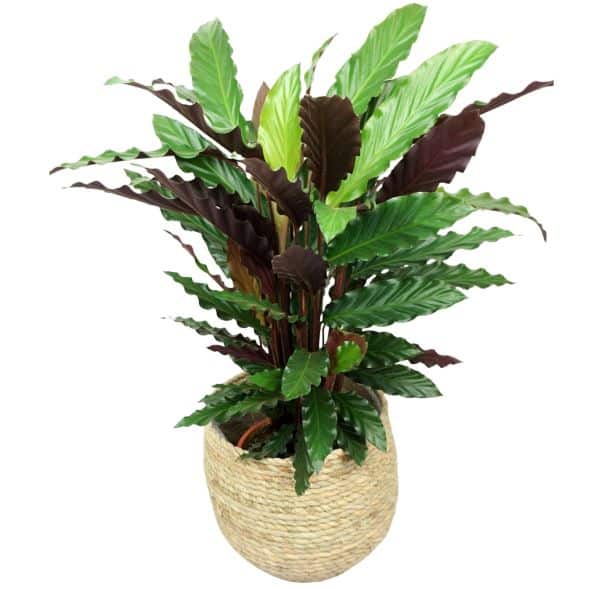
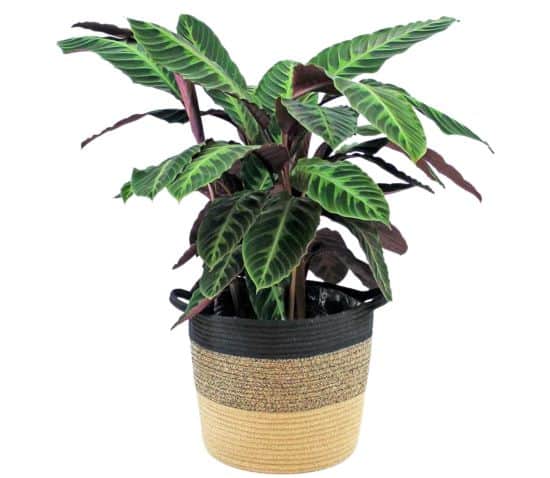


Leave a Reply